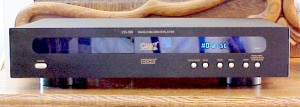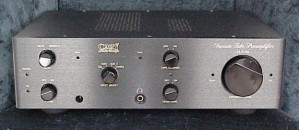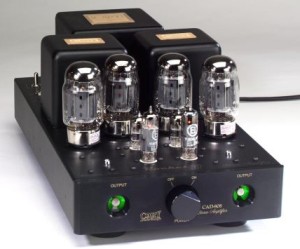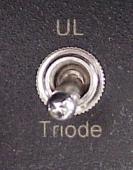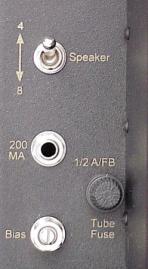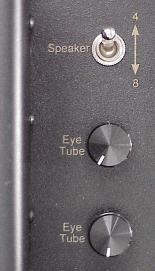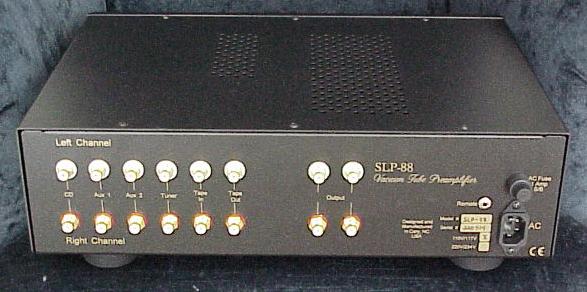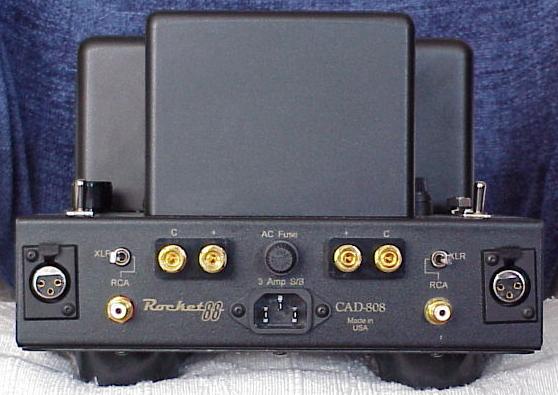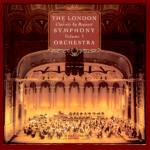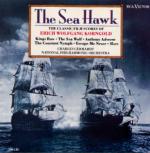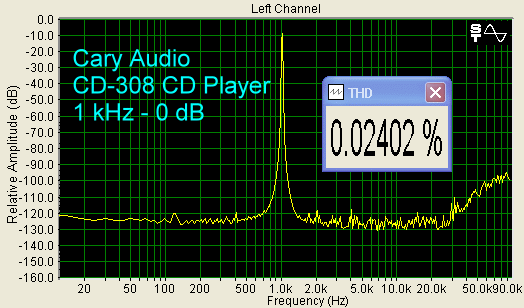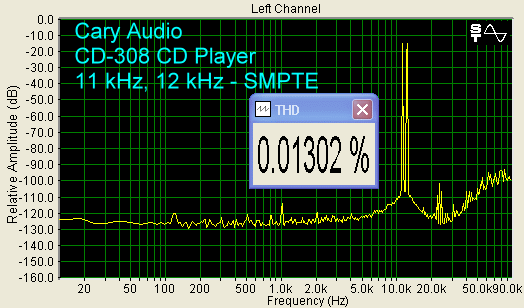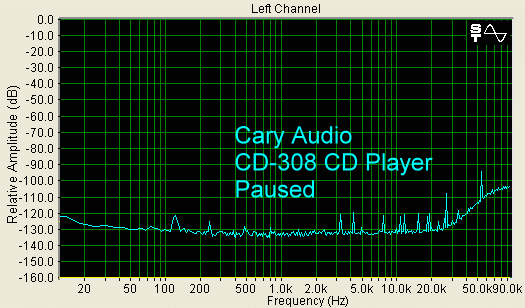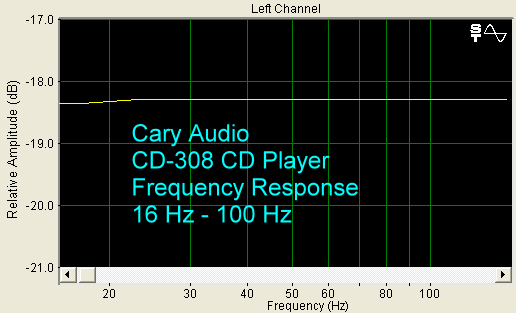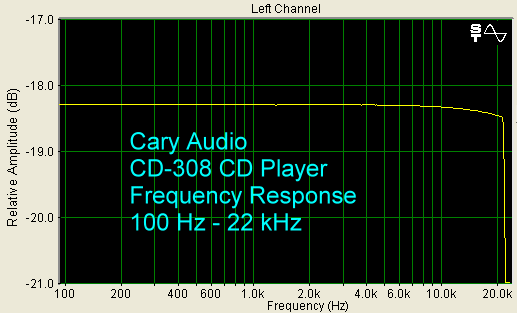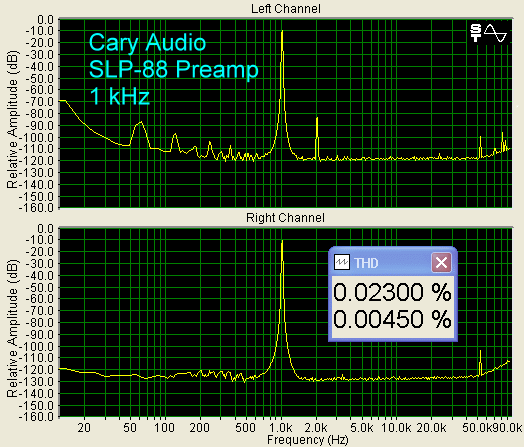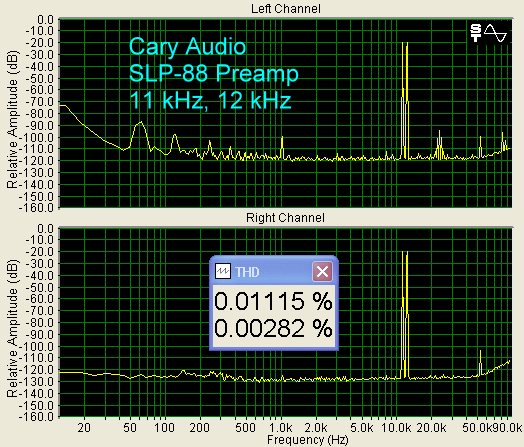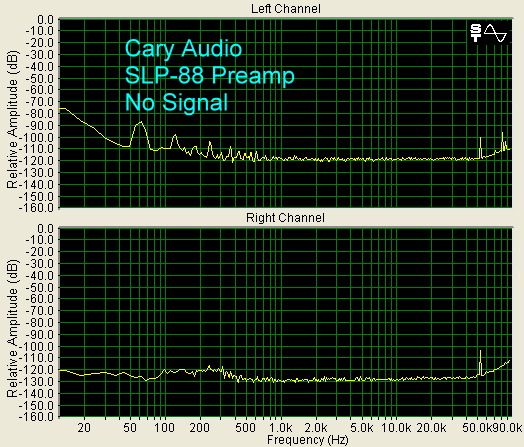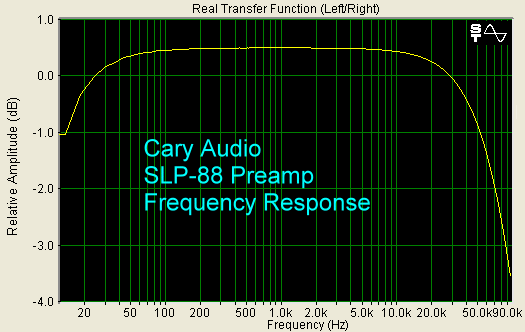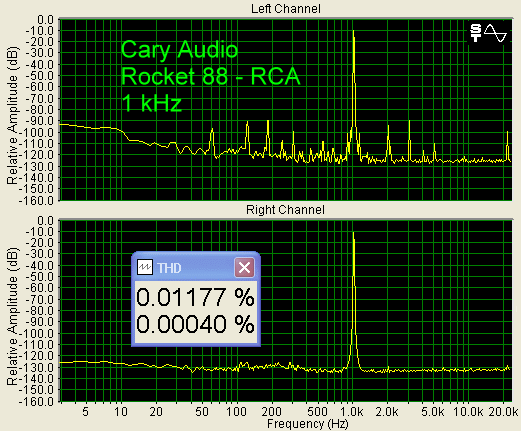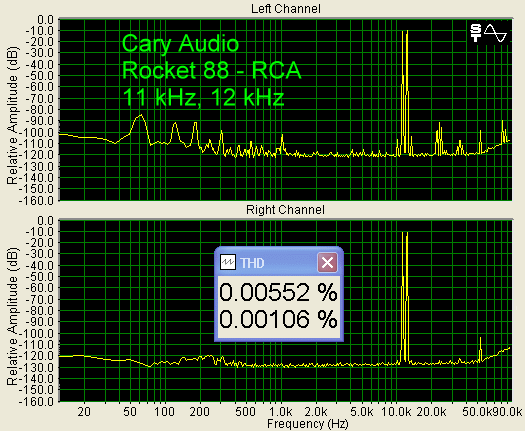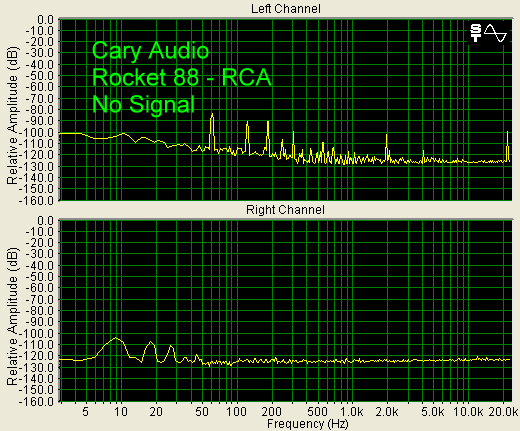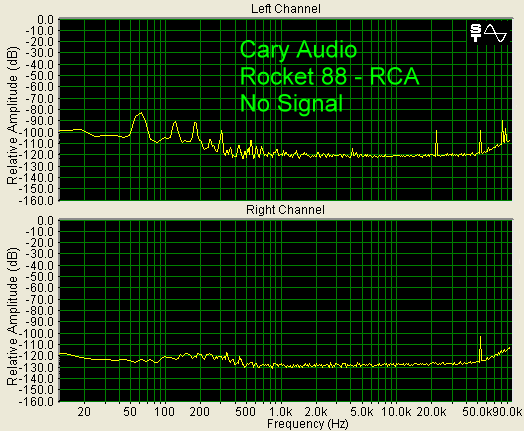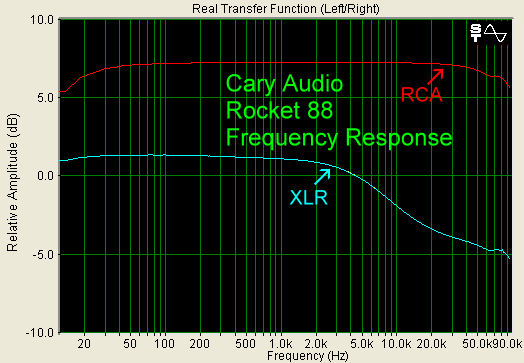|
|||||||||||||||||
|
Introduction Cary Audio is one of the premier tube audio product manufacturers in the world. They have been around quite awhile, but the average consumer may not be familiar with them, because their products are sold only in high-performance shops, and are quite expensive . . . that is, until now. The Cary Audio SLP-88 Preamplifier and Rocket 88 Power Amplifier (a.k.a., CAD-808) are Cary's new entry-level units. The circuitry is built to the same standards as their higher priced components, but without the use of such tubes as 300Bs, which are high in cost. Also, the chassis are not made from quite as thick aluminum as the higher line. There are no fancy knobs, no chrome plating. But these things don't affect the sound. The Cary Audio CD-308 is their top-of-the-line CD player. It is not a new product and is not tubed, but we tested it here as part of a complete Cary system. The Design Although the CD-308 has all the bells and whistles, the SLP-88 and Rocket 88 are much more simplistic. For example, the SLP-88 preamp only uses one tube per channel, each tube being a dual triode. The circuit is run single-ended, in Pure Class A. The Rocket 88 uses KT-88s (pentodes) instead of 300Bs (triodes). There is no pre-gain stage. There are only two gain stages, the input (EL-84 current source and 6922 phase inverter), and the output (KT-88s). It is a push-pull design (not single-ended). The Rocket 88 is very interesting from several perspectives. It uses a "Retro" design Cat's Eye tube for monitoring output level for each channel. You can see them in the photo above left. These are the round green "things" on the left and right side of the amplifier front panel. They were used on various products back in the 1960s, especially on tape recorders (they were reel-to-reel recorders back then). Only professional recorders had VU meters, and this was long before LCD recording meters that we see on modern cassette recorders of all price ranges. The Rocket 88 is switchable between functioning in Triode Mode (20 watts Pure Class A output per channel), and Ultra-Linear Pentode Mode (40 watts Class A/B per channel). There is a small toggle switch behind the far left KT-88 and far right KT-88 for switching each channel between these two modes independently, although I cannot think of a reason why I would ever use one channel in triode mode and the other channel in pentode mode. It may be just to keep the circuits as isolated as possible. Pentodes like the KT-88 are converted to triodes by connecting their three grids together instead of having them separate. It is not quite the same thing as a dedicated triode (which has one grid to begin with), but it comes close. A photo of the toggle switch on the Rocket 88 is shown below.
On the rear of the amplifier are two other sets of switches. One of these (one for each channel) allows you to switch the output transformer (tube power amplifiers generally use output transformers, while solid state power amplifiers in general, do not) from 4 Ohms to 8 Ohms. On the left rear (photo below, left), are the speaker impedance toggle, a phone jack for measuring bias current (placed on the grid of the output tubes), and a bias potentiometer. A phone cord is supplied, and you simply connect the cord to the amplifier jack, with the other end to a volt meter, and measure the bias current. If it is not in the correct range, you adjust it using the potentiometer. One the right rear (photo below, right) are the speaker impedance toggle for the right channel, and potentiometers to adjust the brightness of the Cat's Eye Tubes on the front. One of the eye tubes was a little brighter than the other, so I used the dials to make them the same (they are actual vacuum tubes, not LCD or other such technology).
The SLP-88 front panel has On/Off, Mute, Tape Loop, Headphone On/Off (with headphone jack), and volume control. There are four sets of inputs to select from. The remote control is very simple, with adjustments for volume through the motorized volume control knob on the preamp. You can't change inputs with the preamp remote. The rear of the SLP-88 preamp is shown below. It has a full set of inputs (RCA) and two sets of outputs (RCA). The AC cord is detachable.
The rear panel of the Rocket 88 is shown below. At the top you can see the large power transformer, and to the left and right are the two output transformers. The Rocket 88 has XLR balanced as well as RCA unbalanced inputs, while the SLP-88 only has RCA unbalanced inputs and outputs. Some products allow you to use the RCA or XLR without having to switch between them. The Rocket 88 uses an XLR/RCA toggle for each channel.
The CD-308 is not an entry-level player. It has massive build quality, and uses Burr-Brown 24/96 DACs. It is for CDs only. It will not play 24/96 two-channel audio discs, because these are on DVD-V format, nor will it play SACD or DVD-A. It comes with a "typical" remote control with all the functions. Easy to hold and use, but remotes are not my thing. The Listening I tested the Cary system with Magnepan Magneplanar MG1.6/QR Full-Range Planar-Magnetic Speakers and a variety of cables. The Magnepans are full range. There is no cone woofer. The Carys had a lush midrange, modest bass, and delicate yet detailed highs. I preferred the Ultra-Linear setting over the Triode setting, as UL gave me more dynamics and a little more snap to the transient leading edges. My wife and I sat there hour after hour listening to our favorite CDs, such as John Williams' (classical guitarist) "Echoes of London", CBS Records, MK-42119. The midrange is a distinguishing characteristic of tube amplifiers, but not of every tube amp. There are good tube designs and bad ones too, just as there are with any type of product. The Cary is superb. Sometimes, when listening to a new item, I feel the need to get up and leave the room. Probably some subtle higher-order odd harmonics. It does not take much of them to be very irritating. Tubes tend to distort with even-ordered harmonics, which are actually pleasant. Purists would say that is not high fidelity, not accurate. Well, no system sounds like an actual live performance. The idea is to have pleasure when listening. Relaxing and very pleasurable . . . that is the Cary sound. The John Williams album has solo guitar and some tracks with orchestra. I had hoped the 40 watts per channel would be enough to drive the Magnepans to reasonable levels, and I was not disappointed. In fact, there was more than enough, at least in Ultra-Linear mode. The leading edges of the guitar pluck transients were all there. The orchestra had enormous width and depth. The violins were warm and sweet. I almost fell asleep. In fact, after several hours of listening to the Carys one evening, I had a wonderful night's sleep, one of the best in weeks. A combination of classical music being played on a system that warms the soul like a crackling fire. I highly recommend it. Another favorite album of mine is "Classics by Request - The London Symphony Orchestra", Victoria's Secret, Volume 5. It has a lot of Christmas music on it, but also with some other things, it lets you listen to seasonal sounds any time of the year. Again, the Cary sound made my heart rate and blood pressure drop to much healthier levels. It goes very well with a warm fuzzy cat on the lap, a cup of herbal tea, or a snifter of brandy. "The Sea Hawk", RCA VIctor, BMG Classics, 7890-2-RG, is an old analog recording, converted to CD, with film scores from old Warner Brothers movies, like "The Sea Hawk", "Kings Row", "Escape Me Never", and others. Erich Wolfgang Korngold scored the films, and they were re-recorded with Charles Gerhardt and the National Philharmonic Orchestra. The scores are lush, and as such, need a great amplifier system to reproduce them. The Cary's fit the bill admirably.
On the Bench For the CD-308 CD Player, the THD spectra from 1 kHz sine waves, as well as with 11 kHz, 12 kHz sine waves are excellent, as shown in the graphs below.
In "Pause" and with playing a silent track, the CD-308 noise spectra are the same. In "Stop" mode, the noise spectrum changes, as illustrated in the animated GIF below. In any case, though, the noise is very low.
The measured frequency response of the CD-308 is within 0.25 dB, 20 Hz - 20 kHz, as shown below.
The SLP-88 Preamplifier has a higher noise floor in the mid and low bass, compared to the CD-308, but it is still quite low overall. THD with a 1 kHz input is 0.23%, and the only visible harmonic is second-order at 2 kHz. This is the kind of distortion spectrum I like to see. It means great listening. THD with 11 kHz, 12 kHz input signals is also good.
Shown below is the noise floor of the SLP-88 with no music playing. Peaks from the AC in the power supply can be seen (60 Hz, 120 Hz, 180 Hz, etc.)
The measured frequency response of the SLP-88 is within 1 dB, 20 Hz - 20 kHz.
For the Rocket 88 Power Amplifier, I made measurements with both the RCA inputs and the XLR inputs. With a 1 kHz sine wave, as well as with 11 kHz, 12 kHz sine waves, the XLR input provided the lowest THD, indicated in the four graphs below. Both inputs, however, gave low distortion. Unlike with the SLP-88, there is more than just the second harmonic, i.e., third, fourth, and fifth harmonic with the Rocket 88. The peaks below 1 kHz represent noise from the power supply, not IM peaks (see the four noise floor graphs below). The third harmonic is larger than the second, and the fifth is larger than the fourth. Not what I would like most to see, but the instruments tell it like it is. If this amp were a single-ended triode, like a 300B, the peaks other than the second would not be there, but 300B amplifiers don't give you 40 watts per channel.
With 11 kHz, 12 kHz, shown below, using the RCA input produced a 1 kHz IM peak, but using the XLR input did not. However, the noise floor is a little higher with the XLR in this case, and that may be hiding the 1 kHz peak.
Noise floor graphs are shown below, for both types of inputs, and with different scales.
Here is one area where the RCA input performed better than the XLR input. Below are frequency response graphs for both input types. Notice that the RCA input is within 2 dB from 20 Hz - 20 kHz, while the XLR input shows significant roll-off starting at about 1 kHz, so that it is down 5 dB by 20 kHz. The SLP-88 does not have XLR outputs, so I could not use the Rocket 88 XLR inputs with it, but I did try my Balanced Audio Technology VK-5i with the Rocket 88, and used the XLR connections. The sound was a bit too rolled off at the high end for me, and did not have enough gain (remember, the Rocket 88 does not have a pre-gain stage). So, the RCA connections between the SLP-88 and Rocket 88 gave me the preferred sound anyway.
Conclusions The Cary CD-308, SLP-88, and Rocket 88 system is superb. I had a wonderful time listening to these components (and a lot of fun testing them on the bench, as if you couldn't tell from all the graphs). Tubes are not for everyone, and 40 watts are not enough for everyone, but if you like a warm lush sound, which I certainly do, I cannot recommend the Carys highly enough. They are affordable, well built, and from a company who knows how to deliver a great product.
- John E.
Johnson, Jr. -
|
|||||||||||||||||

